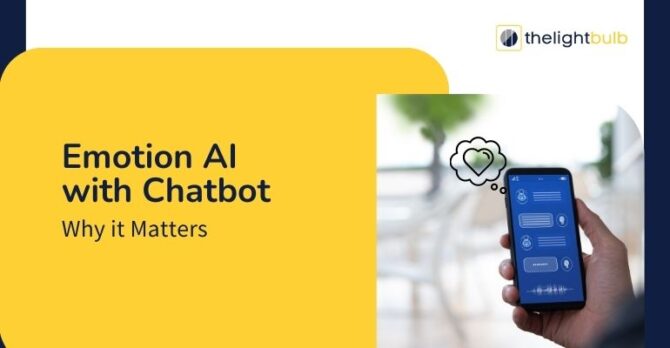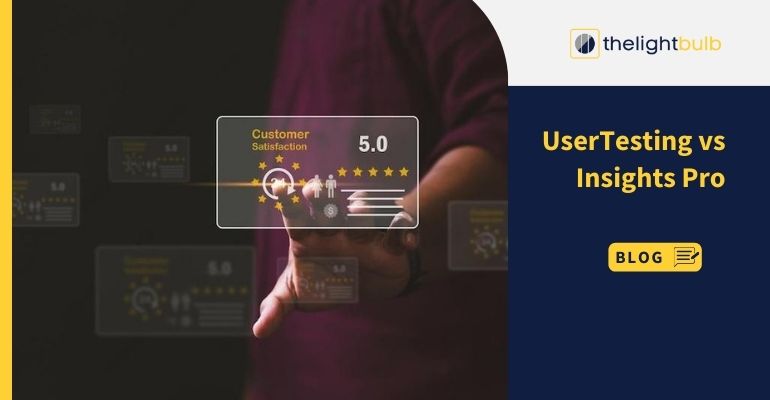
Chatbots are everywhere. Most website you visit, and almost every app you have on your smartphone, have chatbots to address your queries. And despite their omnipresence, their efficacy is debatable, because the chatbots are barely human and throw a bunch of questions at you whenever you try to talk to them. Most users would agree when we say that it’s annoying and makes the process more complicated for us instead of simplifying it. Integrating Emotion AI with chatbot can resolve this issue.
With Emotion AI, chatbots can better understand and address our queries by tapping into our emotional state and grasping our intent in a better way, facilitating a more human conversation and a more pleasant customer experience. Unleashing the power of emotional intelligence in chatbots is an intriguing proposition, and if you’re equally intrigued, look no further, because you’ve come to the right spot. This extract explores the inherent benefits of using Emotion AI with chatbot and how this integration enables the expansion of human expectations from chatbots.
The Expansion of the Idea: Emotion AI with Chatbot
Emotional chatbots are fragments of computer code that allow bots to engage in more human conversations and stimulate a more natural flow of conversation between humans and bots. When AI integrates into a code fragment like the one housed by chatbots, it offers machines/bots the ability to understand the underlying emotions in conversation using data and experience. It makes them trainable and smart.
Emotional Intelligence (EQ) is a subset of AI that enables computers and machines to understand human emotions and group them into emotional sets like anger, happiness, disgust, excitement, and despair through advanced techniques like FACS, eye-tracking, and speech recognition. Which allows for a better response framework than the one that focuses on semantics alone.
Training AI-based chatbots to harness emotional intelligence opens up a new set of possibilities, both for customers as well as for brands trying to sell the products. It resolves queries more conveniently for customers while offering brands an opportunity to enhance their customer experience.
Any conversation with a bot feels inhuman because chatbots live within boundaries and have a pre-determined set of responses. They aren’t dynamic and never record interactions for future reference.
Any conversation with a bot feels inhuman because chatbots live within boundaries and have a pre-determined set of responses. They aren’t dynamic and never record interactions for future reference.
When we’re at a house party and ask the host, “Can I use the bathroom?”
We’re asking them for directions, not affirmation. And although that’s intuitive to a person, a chatbot could never comprehend the underlying intention and would reply with a “Yes” almost every time.
An emotion AI-equipped chatbot is more than capable of understanding cultural references, local lingo, and slang in texts and responding to them appropriately. This makes interactions more meaningful, engaging and accelerates dispute resolution.
Let’s understand this through an example:
Scenario 1
Customer: I want to return my order.
Normal Chatbot: Please select an appropriate reason from the list.
Scenario 2
Customer: I want to return my order.
Emotion AI-equipped Chatbot: I regret the inconvenience you had to go through. Do you want me to fetch your order details and complete the return request, or will you prefer a call with our customer care executive?
You can use the above two scenarios to create an image comparing the two and add it here. Now, which one of these chatbots would you prefer on your favourite e-commerce website?
The answer is pretty intuitive!
Problems that Emotion AI Will Solve for Chatbots
The current generation of chatbots and virtual assistants has its own set of limitations and most of it can be done away with, by simply integrating Emotion AI with chatbot. Let’s look at some of these problems:
1. Limited Dataset to Work With
Regular chatbots and virtual assistants face a barrage of conversations and situations, yet they only have a limited pool of data to draw from. This means that their responses are confined to a set script, making it challenging for them to personalize their approach for each unique scenario. With a rigid response set, these chatbots cannot address the specific needs and challenges posed by each interaction. According to the Global Consumer Customer Service Report, 40% of consumers in the US and 50% in the UK still prefer speaking with a human rather than a chatbot.
2. Difficulty in Grabbing Context
The current generation of chatbots and virtual assistants rely heavily on semantics to understand the context of conversations and that’s an inaccurate approach when you consider that every day conversations have a healthy mix of slang and cultural references. Emotionally intelligent chatbots track the emotional state of the customer and combine the emotional insights with the semantics to better understand the context and then respond appropriately.
3. Lack of Learning Models
For a chatbot to excel, it must be able to tackle any situation it encounters and improve from past interactions. Traditional chatbots, however, rely on basic programming and a limited set of data, lacking the ability to grow their conversational abilities. Emotionally intelligent chatbots incorporate advanced learning models, allowing for tailored responses and more natural conversations, breaking free from the constraints of a fixed data pool.
We’ve touched upon on some other interesting use cases of Emotion AI in fields like market research and B2B SaaS sales, which you can check out on our website.
Some Examples of Emotional Chatbots
- Emotionally-aware chatbots have proven to be valuable in healthcare, particularly in diagnosing psychological conditions like depression. Companies such as Woebot and Moodkit have created virtual chat therapists using emotional AI, capable of engaging in natural conversations with patients, diagnose their condition, and provide comfort through dialogue.
- An AI-powered chatbot called Replika designed to provide personalized support and companionship. It uses advanced natural language processing techniques to learn about its users, including their thoughts, feelings, and writing style. Over time, Replika can replicate the user’s personality and behavior, creating a unique conversational experience for each individual.
- Mitsuku, an AI-powered chatbot that offers conversational experience, uses advanced natural language processing algorithms to understand and respond to user input. It has an extensive database of conversation starters and responses, allowing it to have engaging conversations on a wide range of topics, from current events and popular culture to personal experiences and emotions.










